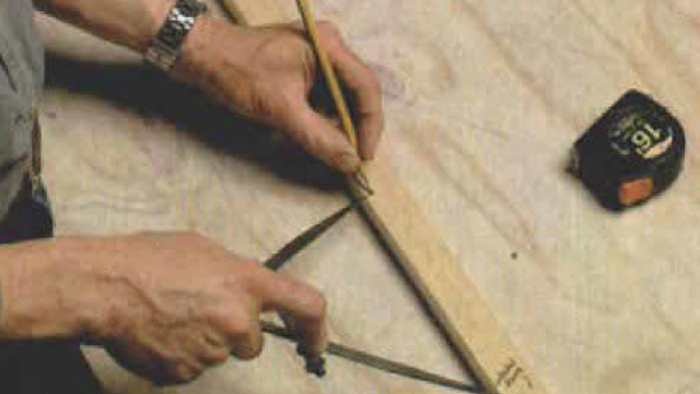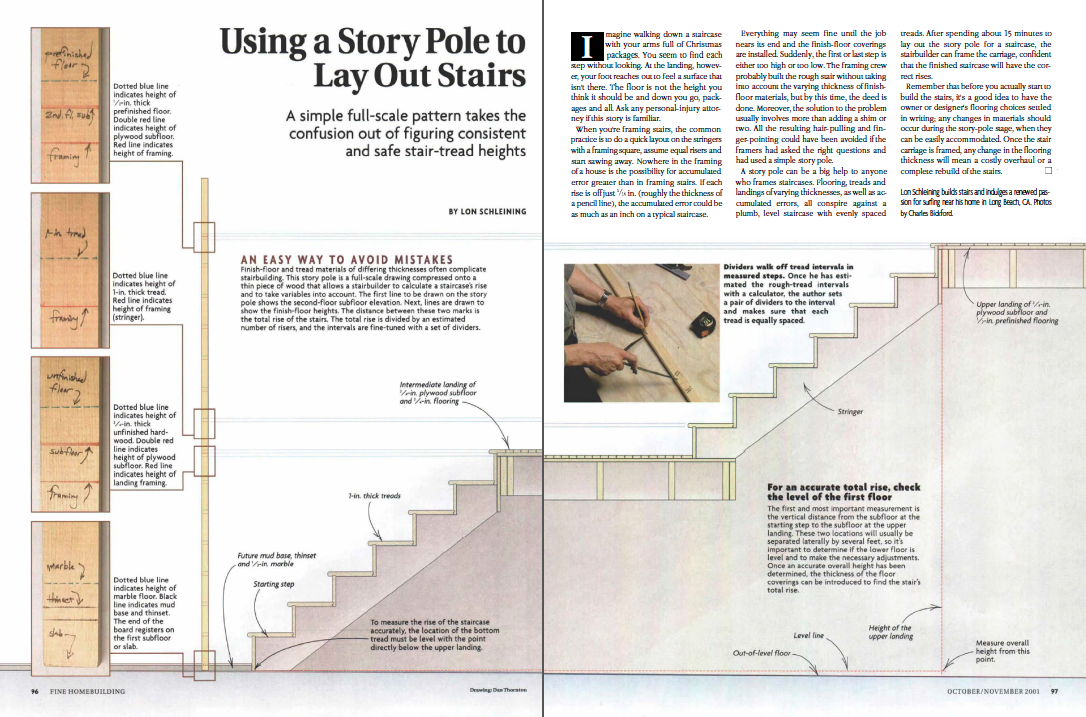Using a Story Pole to Lay Out Stairs
A simple full-scale pattern takes the confusion out of figuring consistent and safe stair-tread heights.

Synopsis: This short article describes how to use a story pole instead of a framing square to lay out stairs and eliminate accumulated layout errors that can result in uneven tread heights.
Imagine walking down a staircase with your arms full of Christmas packages. You seem to find each step without looking. At the landing, however, your foot reaches out to feel a surface that isn’t there. The floor is not the height you think it should be and down you go, packages and all. Ask any personal-injury attorney if this story is familiar.
When you’re framing stairs, the common practice is to do a quick layout on the stringers with a framing square, assume equal risers and start sawing away. Nowhere in the framing of a house is the possibility for accumulated error greater than in framing stairs. If each rise is off just 1/16 in. (roughly the thickness of a pencil line), the accumulated error could be as much as an inch on a typical staircase.
Everything may seem fine until the job nears its end and the finish-floor coverings are installed. Suddenly, the first or last step is either too high or too low. The framing crew probably built the rough stair without taking into account the varying thickness of finish-floor materials, but by this time, the deed is done. Moreover, the solution to the problem usually involves more than adding a shim or two. All the resulting hair-pulling and finger-pointing could have been avoided if the framers had asked the right questions and had used a simple story pole.
A story pole can be a big help to anyone who frames staircases. Flooring, treads and landings of varying thicknesses, as well as accumulated errors, all conspire against a plumb, level staircase with evenly spaced treads. After spending about 15 minutes to lay out the story pole for a staircase, the stairbuilder can frame the carriage, confident that the finished staircase will have the correct rises.
Remember that before you actually start to build the stairs, it’s a good idea to have the owner or designer’s flooring choices settled in writing; any changes in materials should occur during the story-pole stage, when they can be easily accommodated. Once the stair carriage is framed, any change in the flooring thickness will mean a costly overhaul or a complete rebuild of the stairs.

From Fine Homebuilding #142
Fine Homebuilding Recommended Products
Fine Homebuilding receives a commission for items purchased through links on this site, including Amazon Associates and other affiliate advertising programs.

11" Nail Puller

Stabila Classic Level Set

Leather Tool Rig





